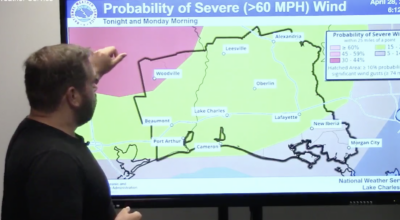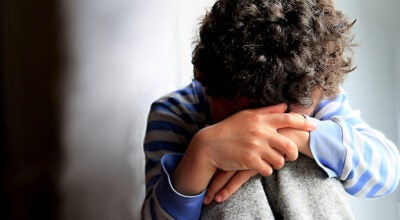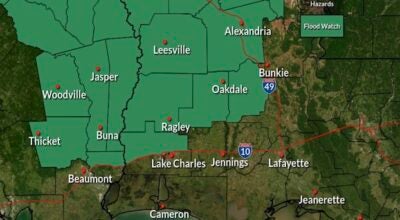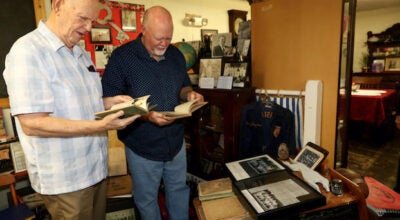Biomimicry: Changing the world of design
Published 7:08 am Tuesday, September 13, 2022
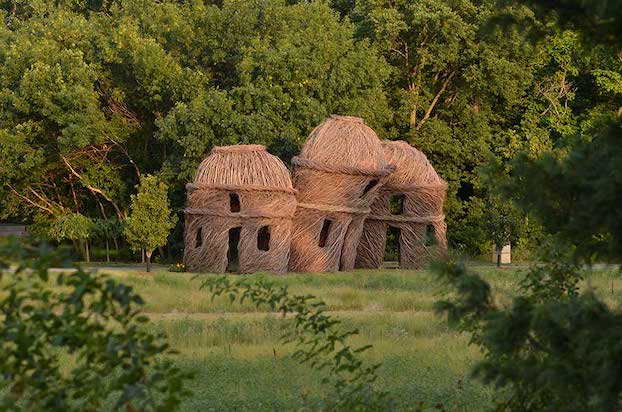
- “Nature’s Blueprint: Biomimicry in Art and Design” explores the patterns in nature that might hold answers to problems in engineering, conservation and environmental justice. (Special to the American Press)
“Nature’s Blueprint: Biomimicry in Art and Design” will be coming to the Historic City Hall Arts and Cultural Center on Friday, Nov. 11. This exhibition explores the intricate, biological designs that occur in nature.
Biomimicry is a design and production practice that examines the forms, shapes and processes that are utilized in biological designs to create more efficient and sustainable man-made structures. This is not a new concept. Famous artists and scientists, such as Leonardo DaVinci and Antoni Gaudi, utilized biological structures as muses for their creations.
However, with technological advances and the need for innovative solutions for modern problems, biomimicry has not only become more accessible, but more necessary than ever. As technology becomes more powerful, scientists are more capable of recreating the complex formations of organic forms.
“Science and tech are rapidly expanding the types of systems that we use,” said Matt Young, director of cultural affairs at the Historic City Hall Arts and Cultural Center.
According to Young, biomimicry has both technical and artistic benefits.
“Biomimicry isn’t limited to just painting or sculpting a flower, but it includes exploring the material properties and sequences found in nature, and how whole biological systems are structured — and putting that into works of art.”
Design improvements to infrastructure, such as bridges and turbines, have been inspired by biomimicry. By examining biological structures, more sustainable structures are able to be built.
An example is the mimicry of spider silk to create bridge cable systems. Spiders are able to create strong, but lightweight webs via unique patterns. Using those web patterns as inspiration, architects were able to create more efficient cable suspension bridges.
“The Wright Brothers invented the first flying machine based on the movements of a pigeon,” Young said. “The hook and loop fastener, or otherwise known as Velcro, was created by mimicking the bur plant.”
He believes that Southwest Louisiana can greatly benefit from the practice of biomimicry.
“As the sportsman’s paradise, our state can learn a lot from this exhibit,” he said. “By recognizing how complex and fragile nature is, we can learn new ways of combating coastal and wildlife conservation.”
Biomimicry can also help with alleviating the natural side effects of coastal erosion and hurricanes.
“We can also recognize the importance of research and being proactive,” he said. “The Gulf Coast is our greatest defense against hurricanes. Nature has already field-tested many of the solutions we need for these problems. Imitating their responses can provide much-needed relief.”
Artistically, through exploring the properties, processes and dynamics of natural structures, artists are able to create thoughtful, natural pieces.
With studying biological designs comes a deep understanding of the world around us, and how nature has addressed ecological difficulties.
A primary benefit of using nature as a foundation for artworks, architecture, and design is their affinity to create socially aware art. Critical concerns, such as conservation, sustainability and environmental justice can be highlighted through biomimical art.
“Artworks and designs that are rooted in nature can address issues like conservation and sustainability,” Young said.
Important conversations will be initiated by “Nature’s Blueprints.” The exhibition’s purpose is to nurture discourse amongst diverse audiences regarding the natural world. The hope is that patrons will leave the exhibit with a deeper understanding of biological designs and the benefits of nature.
This exhibition is an adaptation of the High Desert Museum’s “Innovation Lab: Design Inspired by Nature.” “Nature’s Blueprints: Biomimicry in Art and Design” is produced and toured by ExhibitsUSA, which is a program of Mid-America Arts Alliance.
a
“Nature’s Blueprint: Biomimicry in Art and Design” will be open for viewing from Friday, Nov. 11, through Saturday, Jan. 7, 2023.


